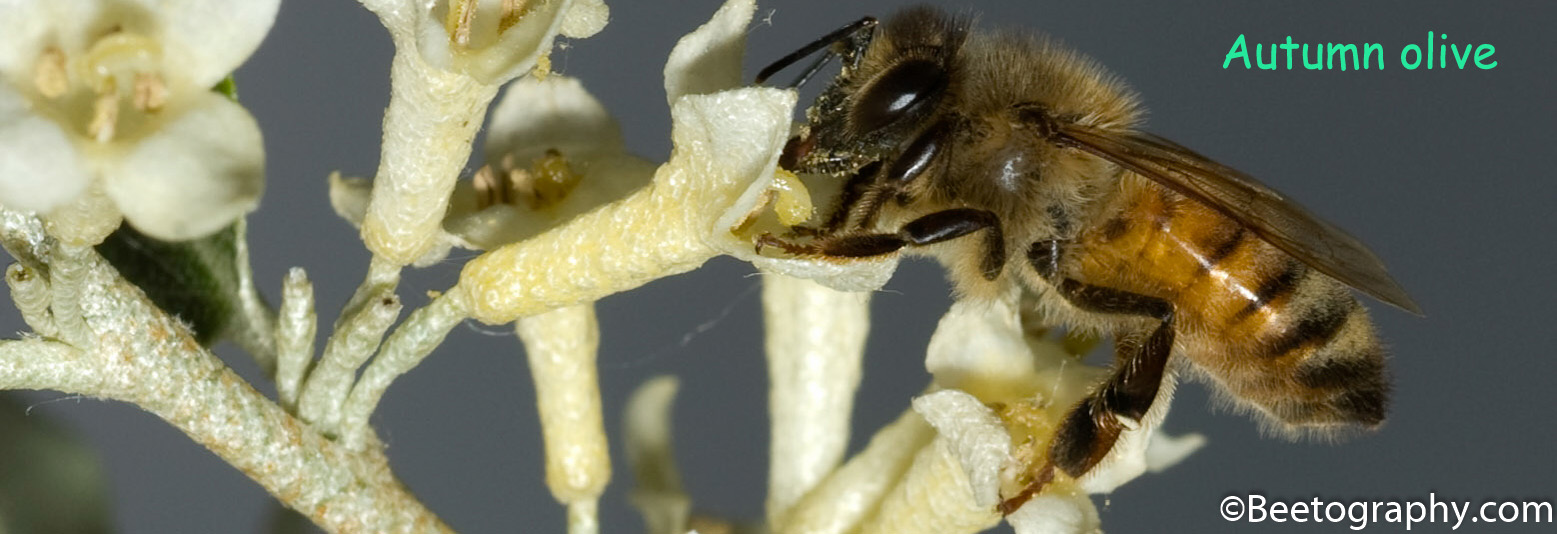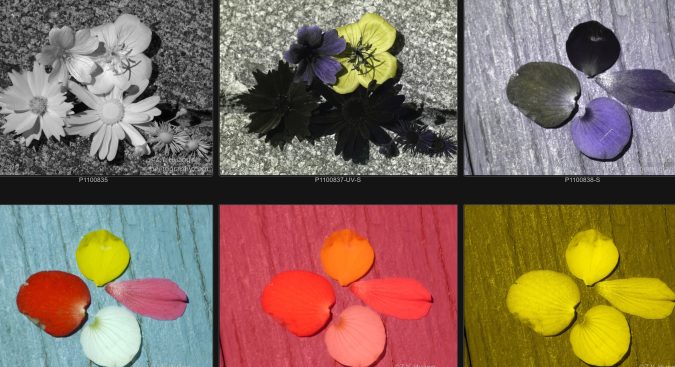A play of colors under various light conditions.
Acronyms: UV=ultraviolet, VIS=visible light, IR=infrared.
Camera: Panasonic DMC G5 full spectrum converted.
IR: camera + UG11 (no VIS, UV is negligible)
UV: camera + UG11 + S8612 (no VIS, no IR, only UV allowed)
VIS: camera + S8612 (no IR, UV is negligible)
Full Spectrum: camera only (all light allowed in, but CCD sensitivity is low to UV so most of the time UV negligible, mainly IR+VIS).
1. I took four petals, each from one color, all flowers are begonias. Under infrared light, you cannot really tell which flower has what: they are supposed to be white, yellow, pink and red. Can you guess which one is white and which is red, at least? I think not.
2. This is under UV. Now we see something interesting. The top one is nearly black while the lower one is light blue. Still I would have guessed the top one is red which would be wrong.
3. Now we see which one is which! I am a bit surprised that red is darker than yellow under UV. If I desaturate this photo to make it black and white, red will be slightly darker than the yellow.
4. Under full spectrum (with visible light + IR + UV), the color is more or less the same with a pinkish cast to everything. I have not tried white balancing this with a Teflon to see what it would look like.
5. now we play with some real flowers. Under IR, they all looked the same — we cannot tell what color they will be.

6. Under UV, the geranium is blue, evening primrose retained its yellow (but remember since the true yellow is blocked by UG11, this yellow is a false color with certain wavelength of UVA). The three types of asters all are highly UV absorptive.
7. Now we can see the asters, one is a tick-seed (Coreopsis), a daisy (Chrysanthemum), and a fleabane (Erigeron sp). They are either yellow or white, of course, since there is no such a thing as a black aster (with the exception of some dahlias so deep purple they can be almost black).
8. Full Spectrum shot of the same flowers. Happy July 4th!


It’s kind of strange that the red petal does not appear darker than the others under UV and IR filters. You would just imagine that it should based on logic.
it is a strange phenomena.
is that same for all thsse species of honey bees or bees?